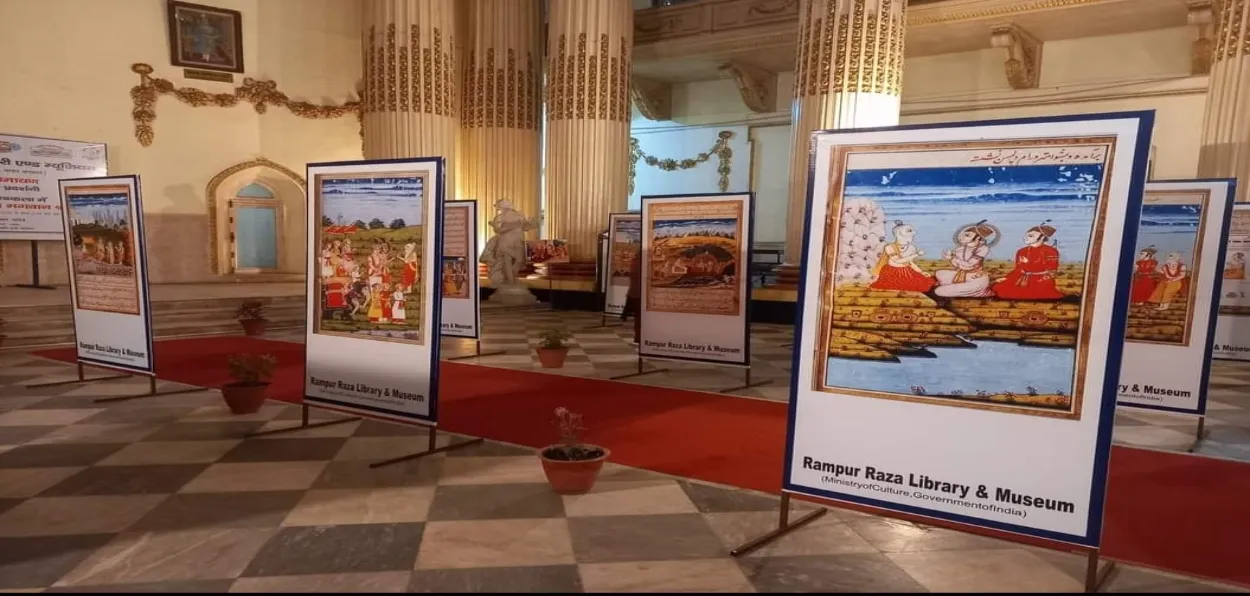
Sanam Ali Khan/Rampur (UP)
On the occasion of Lord Shri Ram's return to Ayodhya on 22nd January and the temple consecration ceremony, an exhibition based on the theme "Maryada Purushottam Lord Shri Ram in Indian Painting" was inaugurated in the architecturally historic palace of Hamid Manzil's Rampur Raza library and museum, situated in the center of the city in Uttar Pradesh.
The special exhibition showcases manuscripts of Ramayana in different languages preserved in the library and rare printed books for instance Ramayana translated into Persian by Mulla Masih Panipati in 1627, Ramleela written by Ghasiram in Urdu of the 18th century, Kissa Ram written by Ahmed Khan Gafalat in 1825, Pandit Jwala Prasad Mishra's commentary on Ramayana written by Shri Goswami Tulsidas, Valmiki Ramayana written by Valmiki observations by Pandit Rajaram a Sanskrit Professor along with Raja Ram Verma’s 1847 explanatory notes on Adhyatma Ramayana Setu and notable Ramayana related manuscripts and blow-ups of Ramayana are displayed. In this exhibition, one will not only get the history of Rampur but will also get ample opportunity to understand "India and its distinct culture".
MLA Akash Saxena inaugurating the exhibition
MLA Akash Saxena and Joint Magistrate Abhinav Jain inaugurated the exhibition. On this occasion, the calendar of 2024 of Raza Library and Museum featuring a rich array of pictures from its prized manuscript Valmiki Ramayana translated into Persian from Sanskrit by Sumer Chand in 1715 during the reign of Mughal emperor Farrukh Siyar was also released.
Visitors seeing the exhibition
Sumer Chand states “Let it be clear to the intelligent, charming preachers who have a heart as bright as the sun, a conscience as luminous as the moon, and wisdom as the planet Mercury, that this writer, who is the most insignificant among the small and the great, and whose name is this verse “Vav wa daal wa alif wa kaaf navishtam daah wa chand, Namay man bood batarteeb chu kardam pevand”. (When I wrote the letters of the Persian alphabet ten times and a few times, when I connected it in order, it became my name.
The show started with a bhajan by Syed Naved Qaiser Shah and praise of Shri Rama by Dr. Preeti Agarwal.
Joint Magistrate Abhinav Jain speraking at the inauguration
The chief guest said “Everyone knows that Lord Shri Rama is going to come to his house (Ram temple in Ayodhya) after 500 years. Just as the festival of Diwali was celebrated in Ayodhya when Lord Shri Rama returned (after exile of 14 years), similarly we are celebrating this festival by holding this exhibition.”
ALSO READ: Yasmin works to turn scars into stars for Kolkata's slum children
The exhibition will continue till January 28 in this historic library complex featuring elegantly icons of four major religions of India on its minarets.
